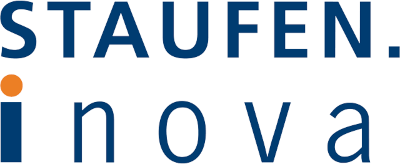
Value networks need to become more resilient. Digitalization and artificial intelligence (AI) create transparency and help companies react faster to change.
Supply chains have eased in recent months. But this is no reason to breathe a sigh of relief. At a time when companies order raw materials, components, and spare parts globally, many supply chain networks are still not clear or flexible enough. For seven out of ten Swiss companies, it is clear that their value network has significant potential for improvement, as shown by the current study “Future in Change” from Staufen.Inova and Staufen.AG.
For the vast majority, the focus is on greater digitization of processes to ensure greater resilience in the supply chain network. Yet four out of ten companies lack an adequate data strategy. “In many companies today, planning from purchase to delivery is still done in Excel. This is not only error-prone, but also prevents a consistent view of the process and forward-looking decisions,” says Senior Manager Achim Schwichtenberg.
Fact-based decisions with AI
Only by breaking down data silos can information be made available and transparent across the supply chain network. Building on this, by using AI, an organization can derive value in the form of predictive decision making from generated facts, rather than relying on the gut instincts of individuals.
A global welding specialist shows how data can be leveraged throughout the supply chain. The company had grown in a decentralized manner over the years, with nearly forty national subsidiaries. The information was organized at the respective location. Without a centralized data pool, there was a lack of visibility across the entire ecosystem and global inventory, resulting in slow delivery. With margins shrinking, management decided to break down the silos and transform data operations. Today, for example, a uniform material number for each item ensures transparency in ecosystem inventories worldwide. Software analyzes where what is sourced.
“As a result, inventories and the capital tied up in the national companies were significantly reduced,” says the Staufen.Inova expert. Meanwhile, the company is also using AI to make predictive decisions based on its data. Forecasts are also used to communicate with suppliers. The company now makes decisions proactively rather than after a problem has occurred. Thanks to the resilient supply chain, management was able to anticipate potential disruptions and save costs even during the multi-crisis, as there were no supply bottlenecks at any time. Not only that, but AI is also helping the company identify where growth is possible. New market share has already been gained and sales and margins have increased.
Digitization and cultural change must go hand in hand
Digitization and efficient value creation are the two issues that concern most companies today, according to the survey. However, very few companies are able to implement the right digital solutions to reduce costs, increase on-time delivery, and improve production quality.
In addition, it is not enough to simply integrate technology and data analytics. Companies also need to make a cultural shift to become a self-learning and continuously improving organization. Investments must be made in the digital training of employees and the recruitment of new digital talent. And last but not least, new partnership models are needed. Only when the supply chain network is robust and resilient to disruptions can the highest levels of automated responsiveness be successfully implemented.
The digitization of the supply chain network should always be approached from a specific use case. It makes sense to start with small projects first and learn from them.
Achim Schwichtenberg, Senior Manager Staufen.Inova

What does the stable supply chain network of tomorrow look like?
The white paper identifies the future challenges and requirements for value networks, explores the dimensions of successful supply chain network management, explains the need for risk management, and shows how your company can achieve a successful network in 5 steps.
MORE ABOUT Supply Chain

What must future supply chain management be capable of?
Innovative supply chains are characterized by strong customer orientation, excellent performance, and high flexibility and agility in the face of new market and environmental requirements. If the supply chain is transformed from a cost factor to a success factor, it can become an integral part of the competitive strategy. Thomas Spiess is a Member of the Management Board of STAUFEN.INOVA AG in Switzerland. He studied mechanical engineering at ETH Zurich and has been an expert for supply chain management for almost 30 years.
Read more




